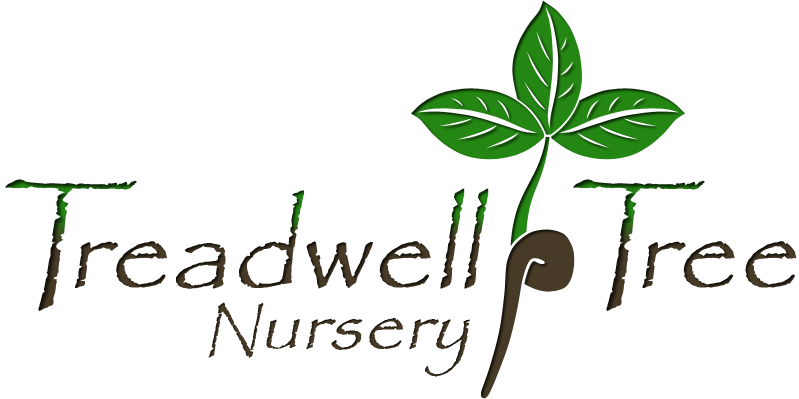This March prompted a huge sigh of relief as the snow melted and the verdict came in; the security measures put in place over the winter had kept out the voles and all my trees were unharmed. We were off to a good start. There was a much overdue addition to the nursery this spring with the purchase of a large 10 feet by 20 feet greenhouse. This provides me with lots of additional secure space to propagate and manage my ever-increasing number of seedlings. The slug infestation that had besieged my nursery the year before was ramping up again. Thankfully, the new greenhouse did an excellent job at keeping out the majority. Those that did get in were not able to make it up onto my benches. My losses were turning out to be far fewer than last year. The larger saplings outside in the enclosure were not so lucky and night time purges became necessary again. This is the first year that I began to observe toads in my yard; a most welcome addition to the ever-diversifying ecosystem and a natural predator to help keep the slug population in check. There was even the occasional sighting of a fox scurrying along the perimeter, hopefully encountering voles along the way.



Infuriatingly, my summer began with a full-scale battle with a local wildlife resident. One morning an act of kindness would prove to be a costly mistake, as I decided to feed some of my butternut seeds to a red squirrel. Now accustomed to the sweet taste of the butternut, the squirrel began to search for more and discovered the array of walnut seedlings growing in my nursery. It began chewing off the still-attached nuts and carrying them away. Not satisfied with the remnants of the nut, it then began eating the fresh taproots. I tried to chase it away, but it would keep circling back around to the walnuts. It seemed hopeless. The emergency netting that I proceeded to enclose the walnuts in was not fool proof and by supper, the squirrel had chewed its way in. The greenhouse was full and so the only solution seemed to be the construction of a large impenetrable cage which I built with haste. For weeks after the squirrel would survey every square inch of that cage looking for a way in. It was to the point where I actually felt sorry for it despite the run-around I had been given not to mention the loss of inventory. Upon reflection, it was a hard lesson learned if you want to operate a tree nursery.



This was the first time in my tree nursery venture when I realized that the operation had seriously outgrown my current infrastructure. I had saplings growing in pots in every corner of the yard and was faced with a daunting task of closing down and securing them all for the winter. Only half of my inventory was able to fit in the vole proof enclosure and the other was simply going to have to take its chances unprotected. My dilemma was whether to scale back and keep the operation relatively small or learn how to keep going at this scale but efficiently. I hadn’t given too much thought to the idea of efficiency until now as I was just doing it for fun. One major inefficiency of my operation was the potting system that I was using to propagate the trees. The pots were tall and narrow and although they maximized the density of my seedlings, transplanting them into their ‘sale’ pots the following year was extremely tedious and time consuming due to the long, thin unstable shape of the root ball. One transplant would take about 3 minutes with very careful hands to avoid collapsing the root ball when prepping the roots. I needed a new propagation system that would enable transplanting in less than a minute per tree. After much research, the system that I decided to try for 2023 was the Forestry Jiffy Pellet. The soil medium was already in place so propagation would be much faster. The transplant required no careful extraction of the root ball from a plastic pot; just put the pellet in a larger pot with soil and let the roots grow through the netting.



